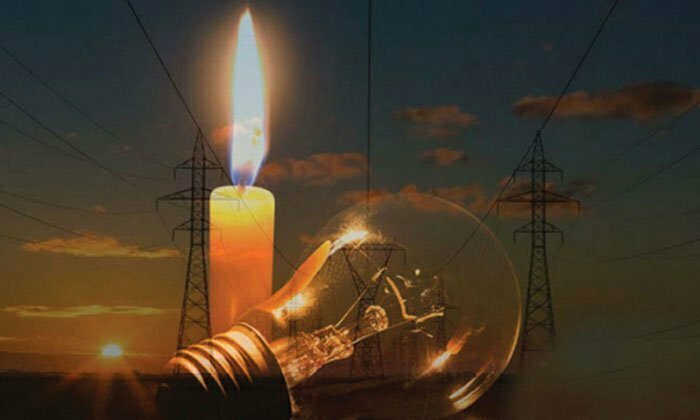Power outage: Grid operators anticipate 18 “alert days” in April.

INDIA’S ELECTRICITY grid is bracing for a difficult summer, with an over 8% increase in anticipated peak demand of 230 GW (giga watt) this year and system operators bracing for an estimated 18 “alert days” in April where a serious power outage could occur, according to National Load Despatch Centre projections (NLDC).
The peak demand of 211.6 GW was observed in July of last year.
To deal with the anticipated surge in demand this summer, a number of measures have been implemented: the preventive maintenance schedule for conventional thermal plants during the April-June period has been postponed for three months; and orders under Section 11 of the Electricity Act (which states that the government may, in extraordinary circumstances, direct a generating company to operate and maintain any station) have been issued to developers of imported coal-fired power plants. State distribution companies who have PPAs (power purchase agreements) with these plants have first right of refusal for the generated electricity, and if they choose not to buy it, the developers can sell it on the market.
In addition, orders have been issued to operationalize approximately 5,000 megawatts of gas-based generation (1,000 MW equals 1GW) of state-owned NTPC Ltd, with the generated electricity from these stations to be sold to PPA holders and the balance generation to be offloaded in the electricity market by the country’s largest power producer.
As part of this agreement, the CERC — the central electricity regulator — will decide the fixed costs of operating the plant. At the same time, the market will determine the variable costs, with the difference reimbursed to NTPC through the Power System Development Fund (PSDF, a regulatory fund created by the CERC).
According to officials, on these 18 days deemed “essential,” NTPC’s power trading arm NVVN has been ordered to contract and pool in gas power suppliers, with any under-recoveries made up from the PSDF.
Reservoir levels are good in the northern region but lower than average in the southern region, and hydropower is likely to be lower than expected. As a result, utilities in the south have been instructed to conserve water and use it to generate energy in the evenings of April.
An advice has also been issued to ensure that imported coal is blended at 6% in traditional thermal plants to compensate for any potential shortage of domestic supplies.
Historically, thermal power plants’ plant load factor (PLF) has been around 55%. In the long run, the Central Electricity Authority — the Power Ministry’s planning arm — has advocated lowering the minimum PLF to 45 percent with minor machine improvements, eventually ensuring they can operate at a minimum stable load of around 40% as a longer-term strategy.
A feasibility study for off-stream hydropower projects for storage use has also been suggested as a way to balance out the fluctuation of renewable energy. Still, development on the ground has been slow.
A viability grant for 4,000 MW of lithium-ion battery storage has been suggested in this year’s Budget, however lithium scarcity is a major barrier, and there are currently no feasible alternatives to lithium for large-scale storage. Off-stream pumped storage is the sole realistic option for energy storage, however project site selection and due diligence take time.
EXPLAINED
Reliance on thermal plants
EVEN THOUGH renewable power is being added, it is becoming clear that India’s electricity grid is still reliant on an outdated fleet of thermal plants.
Renewable energy (RE) targets are also becoming stuck, with solar projects coming online at a slower rate. “The Centre’s research demonstrates that the system is severely dependent on the coal-based fleet of 30- to 35-year-old power units.” In the lack of energy storage technologies, the advent of renewable energy is posing a challenge to grid operation. Without storage, RE is not a reliable source of power. “The country’s old thermal plants are incapable of providing reliable reserve power during an emergency, and we do not keep reserve shaft power or spinning reserves for automatic frequency response, which is now proving to be essential,” said a sectoral analyst aware of the contingency measures in place.
The country now has 410 GW of installed generating capacity. The alarm bells are ringing due to an escalation of multiple issues that have come to the fore every summer since the economy reopened following the pandemic shutdown: the continued reliance on old, inflexible coal-fired plants for base load capacity, a shortage of both coal and gas that fuel thermal capacity, and a pronounced reliance on renewable generation to meet capacity addition targets over the past decade or so. This reliance has created issues for a grid that is increasingly powered by renewables, which are only accessible during particular times of the day and do not necessarily align with the peak demand curve.
The installed capacity from non-fossil fuel-based energy resources was 175 GW, accounting for considerably over 40% of total installed capacity, with solar and wind accounting for the majority of this.
India’s enormous fleet of coal-fired thermal power plants of 200 MW series is over 25 years old, runs on outdated technology, and cannot guarantee long-term dependability.
Furthermore, given that India’s load demand is far from saturated, there is an urgent need to replace old coal-fired plants with supercritical coal-fired plants that provide operational flexibility as an intermediate aim for a comprehensive transition.
Yet, given the coming climate crisis, this may not be acceptable to the international community. In addition, China, a vocal supporter of renewable energy for most of the last decade, has sanctioned the newest coal-fired power facilities since 2015.
According to research published this month by the Center for Research on Energy and Clean Air and the Global Energy Monitor, Beijing authorised 106 GW of new coal power capacity last year, four times more than the previous year and the equivalent of 100 large-fired power plants.
According to many supply chain players, the most overriding issue has been a lack of accurate demand forecasting. Two longer-term government decisions are being viewed as factors that may have had an impact on demand projections as well: there were virtually no new thermal capacity projects to be undertaken beyond 2022, beyond the 50,000 MW thermal capacity under construction since 2016, according to the Power Ministry’s National Electricity Plan for 2017-22, where the emphasis was almost entirely on renewable energy for incremental capacity addition. Second, there was a clear policy discouragement of imported coal at that time, principally to spiralling world coal costs. Both of these judgements are being revised in light of the increased demand.



